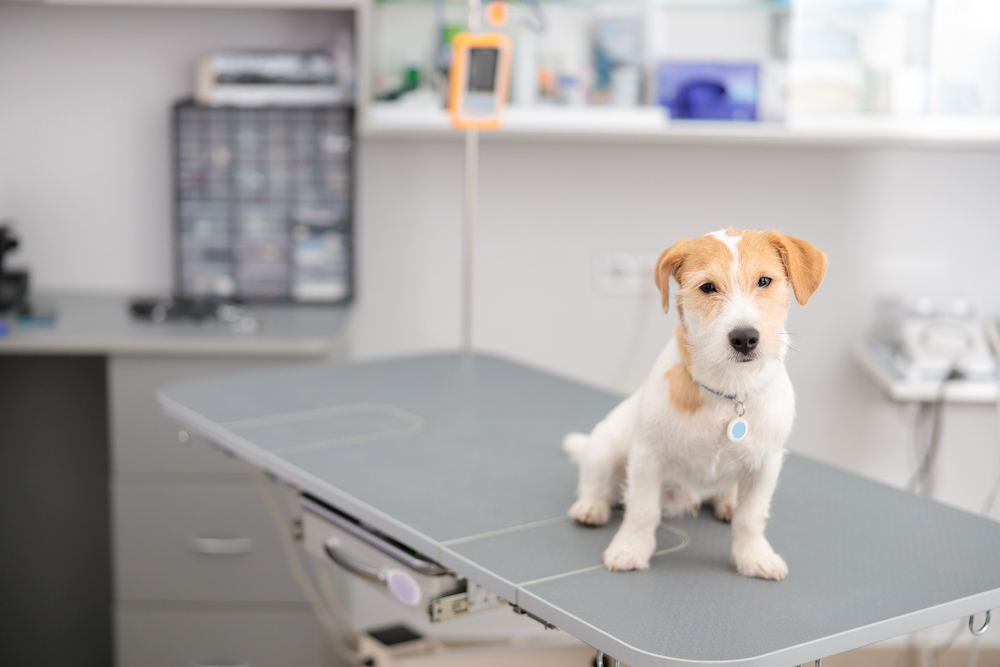If your dog is having luxating patella surgery, here’s the deal: you’re likely feeling anxious. That is usual. Being aware of the timeline enables you to prepare emotionally, arrange veterinary appointments, and establish a secure environment for your dog.
Weeks 1-2: Strict Rest and Initial Healing
During the first 10–14 days of luxating patella recovery, rest is key. Your veterinarian will probably suggest keeping your pet in a crate or a room, allowing only minimal leash walks for bathroom breaks. Within roughly 10 days, you can expect your dog to start toe-touching the leg, this indicates progress.
At home, ice the knee for 10-15 minutes, four times a day for the first 24-36 hours. After the swelling reduces, switch to warm compresses and then proceed with gentle knee flexion exercises. Make appointments for wound checks or dressing removal around days 4-7.
Weeks 3-4: Gentle Mobility Returns
By this point, your dog will bear more weight on the leg, but it will still limp. Leashed strolls of up to 10–20 minutes, multiple times a day, are okay now. You can introduce beginning physical therapy, including knee flexion-extension reps, sit-to-stand coaching, and underwater treadmill or swimming sessions if you have access to hydrotherapy.
Weeks 5-6: Recovery Phase
Your pup’s quadriceps should be getting stronger, and mobility is improving, although light limping could continue. Keep up with daily PT exercises, incorporating additional reps and sit-to-stand drills. It is best if activity is controlled and slow, avoiding jumping, running, or stairs for now.
Weeks 7-8: Consistent Advancement
While most dogs achieve full functional recovery by 8 weeks, mild lameness may persist until week 12. During this phase, veterinarians frequently give the go-ahead for pets to engage in normal activities, controlled play without a leash, and light jogging. However, they still recommend avoiding vigorous movement until muscle strength is completely restored.
Weeks 9-12+: Muscle Recovery and Outlook
By the three‑month mark, your dog should be back to daily routines. Bear in mind arthritis risk remains. Many vets recommend joint supplements or mobility diets after surgery. A 90% success rate and return to normal function are common, with less than 10% relapse rates in UAE clinics, such as VETCARE. That matches global trends (roughly 90% success across the board).
UAE-specific Considerations
- Vet certifications: In the UAE, veterinary products and clinics are regulated by the Ministry of Climate Change and Environment (MOCCAE). Select clinics that are registered, which are frequently found on the Ministry’s website.
- Government guidelines: The Ministry offers advice on pet care and post-operative services, including mobile veterinary units and vaccination services, across the Emirates.
- Costs: The cost of the surgery varies based on the particular procedure, your pet’s needs, and any necessary medications. Get a clear estimate before any surgery begins.
Why This Timeline Matters
- Recovery isn’t linear: There will be slow days, and sometimes swelling returns, or your dog favours the leg. Watch for these signs.
- Commitment pays off: Skipping crate rest, leash walks, or PT can delay recovery or lead to re‑luxation, which occurs in around 10% of cases locally.
- Communication is key: Check in at week 4 or earlier as advised. VETCARE doctors are generally reachable for follow-up.
- Lifestyle matters: Toy breeds recover quickly, large breeds and overweight dogs take longer, possibly up to 12 weeks.
Quick Recap: Luxating Patella Recovery Timeline
| Phase | Weeks | What to do |
| Initial healing | 1–2 weeks | Rest, icing, wound checks, brief leash potty |
| Tentative walks | 3–4 weeks | Short walks, warm compresses, basic PT |
| Rehab phase | 5–6 weeks | Muscle‑strengthening exercises, moderate walks |
| Activity return | 7–8 weeks | Longer walks, gentle jogs, begin play |
| Full recovery | 9–12+ weeks | Regular activity plus arthritis prevention |
Here’s the deal on luxating patella recovery: Most pets bounce back to their old selves. It takes consistency and care, but by week eight to twelve, you’ll likely see your dog hopping alongside again. You’re not alone. At VETCARE, we are here to support you every step of the way.



